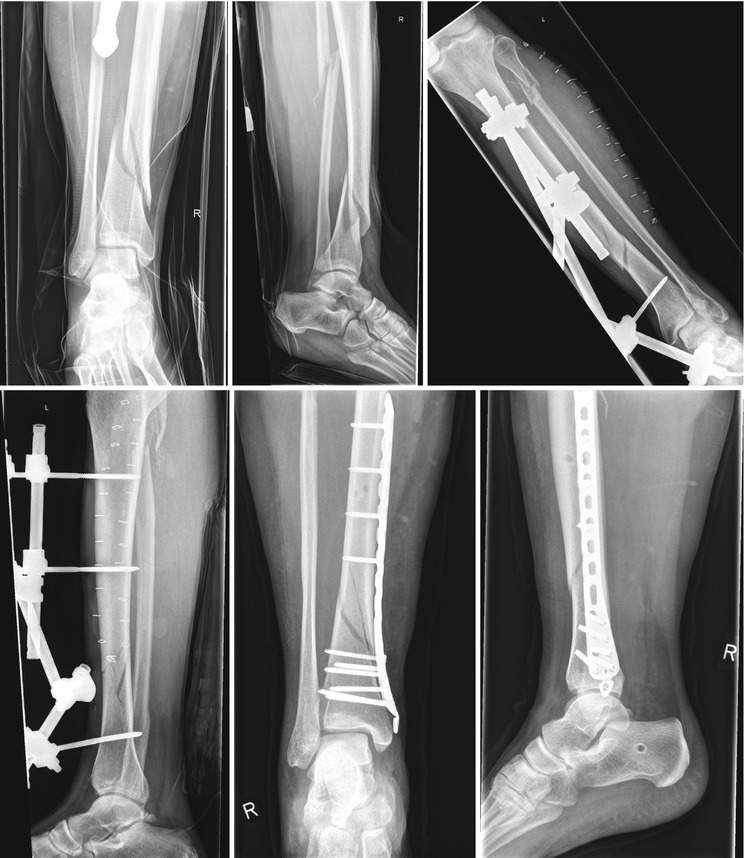Fig. 26.1
A closed fracture of the middle third of the tibial shaft as a typical indication for IM nailing with the possibility of early weight bearing
Intramedullary nailing is indicated in cases of:
Open fractures
Severe soft tissue injury
Segmental fractures
Polytraumatized patients and additional ipsilateral fractures
Morbid obesity
Unstable high-energy fracture
Whether reamed or unreamed nailing is preferable is a controversial issue. Reaming allows for larger nail diameter and may offer increased initial stability in comminuted fractures.
26.7.2.2 Plate Osteosynthesis
Plate osteosynthesis should be considered for:
Tibial shaft fractures adjacent to the metaphysic (Fig. 26.2),

Fig. 26.2
A very distal fracture of the lower leg fixed with an interfragmentary compression screw in combination with a locking plate
Combined diaphyseal and metaphyseal fractures
Complex diaphyseal fractures of the proximal third
Plate osteosynthesis requires good soft tissue conditions to minimize the risk of infection and wound healing issues. The choice of plate should be tapered according to the fracture type.
Transverse fractures: low contact-dynamic compression plate (LC-DCP)
Wedge fractures: interfragmentary compression screws and neutralization plate, LC-DCP
Spiral fractures: interfragmentary compression screws and neutralization plate, LC-DCP
Oblique fractures: interfragmentary traction screws and neutralization plate, LC-DCP
Comminuted fractures: bridge plates
Locking plates are especially advantageous in osteopenia. They can also be used for bridging osteosynthesis of fractures with comminuted bone fragments and bone loss. In many cases, a minimally invasive technique may be selected to minimize soft tissue trauma. After closed reduction the plate can be slid forward along the bone through a small incision. In cases of bone loss, primary bone grafting is not recommended because of the soft tissue injury.
Weight-bearing capacity is restricted for 12–16 weeks after plate osteosynthesis. During the first 6 weeks, mobilization with partial weight bearing of 20 kg is usually allowed. Depending on the follow-up X-ray, weight bearing can be increased. Full weight bearing is usually not recommended until 12 weeks after the operation, except in cases of simple transverse fractures.
26.7.2.3 External Fixation
The main indications are fractures with severe tissue damage. The aim of surgery is temporary fixation of the fracture and muscular decompression. In cases of massive bony comminution, an Ilizarov frame may be considered as an alternative and used for definitive treatment.
Stay updated, free articles. Join our Telegram channel

Full access? Get Clinical Tree








